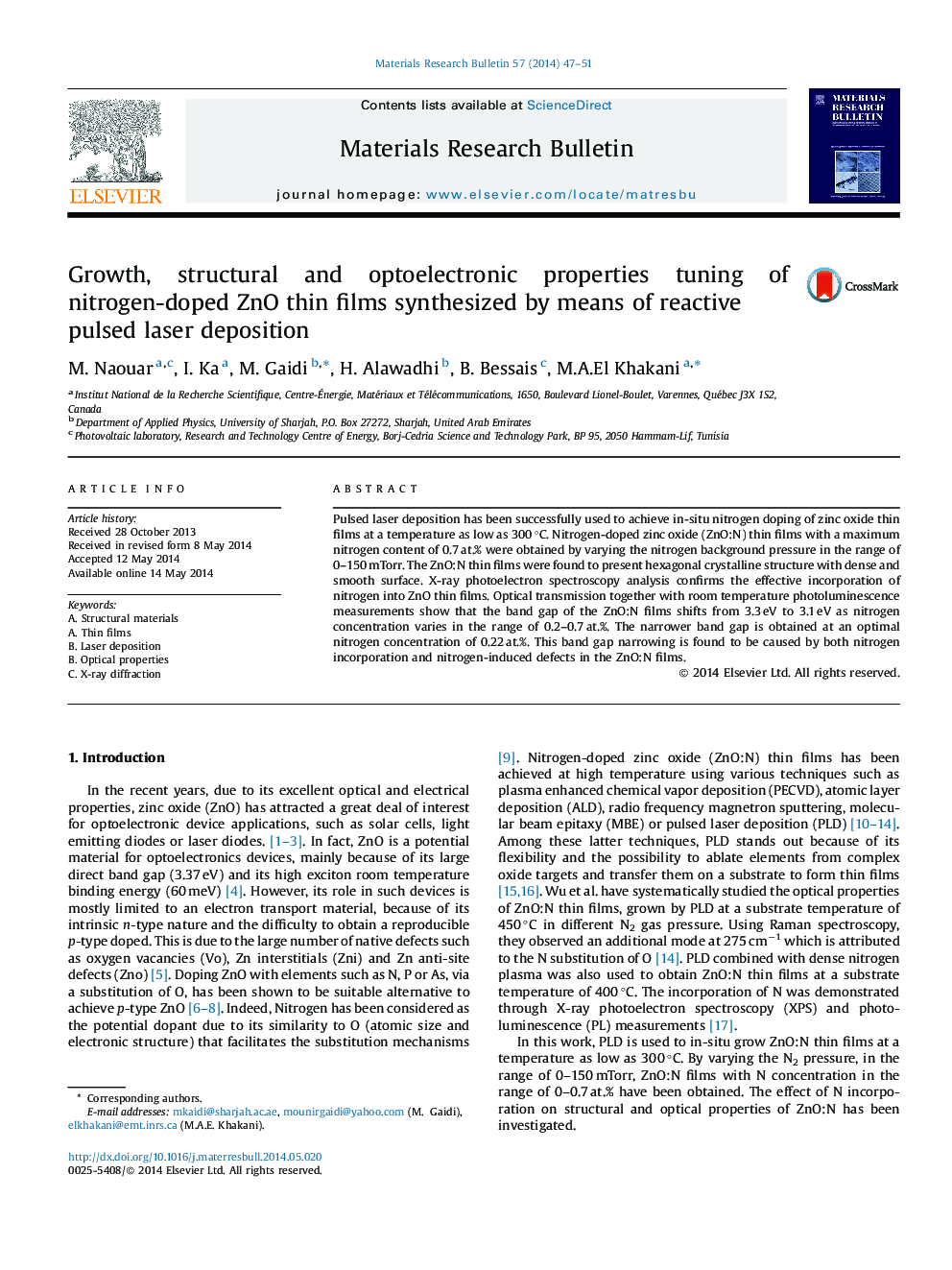| Article ID | Journal | Published Year | Pages | File Type |
|---|---|---|---|---|
| 1488243 | Materials Research Bulletin | 2014 | 5 Pages |
•PLD technique has been used to elaborate N doped ZnO.•A maximum incorporation of 0.7 at.% has been achieved at a pressure of 25 mTorr.•Increasing the N2 pressure decreases the nitrogen content with the creation of more defects.•Optical transmission and PL spectra have confirmed the band gap narrowing.
Pulsed laser deposition has been successfully used to achieve in-situ nitrogen doping of zinc oxide thin films at a temperature as low as 300 °C. Nitrogen-doped zinc oxide (ZnO:N) thin films with a maximum nitrogen content of 0.7 at.% were obtained by varying the nitrogen background pressure in the range of 0–150 mTorr. The ZnO:N thin films were found to present hexagonal crystalline structure with dense and smooth surface. X-ray photoelectron spectroscopy analysis confirms the effective incorporation of nitrogen into ZnO thin films. Optical transmission together with room temperature photoluminescence measurements show that the band gap of the ZnO:N films shifts from 3.3 eV to 3.1 eV as nitrogen concentration varies in the range of 0.2–0.7 at.%. The narrower band gap is obtained at an optimal nitrogen concentration of 0.22 at.%. This band gap narrowing is found to be caused by both nitrogen incorporation and nitrogen-induced defects in the ZnO:N films.
Graphical abstractFigure optionsDownload full-size imageDownload as PowerPoint slide
